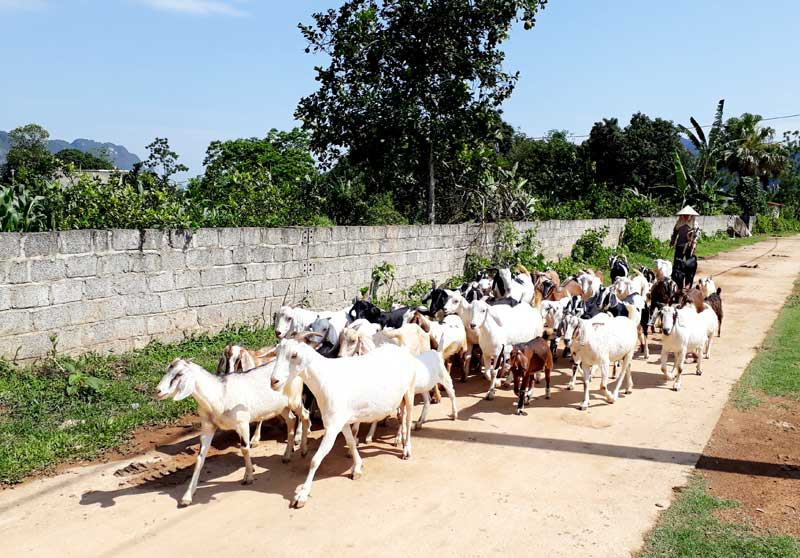


Currently, the commune has about 100
households in 10/16 hamlets and villages, which are maintaining to raise goats,
the total number of herds is approximately 2,000 animals.
In Dong Tam, there are 3 kinds of goats
raising, including mountain goats, Boer goats and Bach Thao goats. Among them,
goats are being raised most in the hamlets of Ngoc Lam, Dai Dong, Dong De, Dong
Danh. Many households in these hamlets have goat litters up to 50 - 60 animals,
such as: the households of Trinh Ngoc Hung, Nhu Van Vu, Pham Van Toi in Ngoc
Lam village; Mr. Vu Van Hung (Dai Dong village), Nguyen Van Nhan in Dong De
village.

The goat litter of nearly 60 animals of Mr.
Nguyen Van Nhan's family, Dong De village.
Previously, Mr. Nguyen Van Nhan's household
in Dong De village had only 5 breeding goats. Every day, in the morning, his
family released goats to the mountains, and in the afternoon they collected
them back to the cage. Due to suitable grazing conditions, the goat population
rapidly developed. Up to now, Nhan's family has 60 goats, of which 20 goats are
breeding. Thanks to raising goats, each year he earns a stable source of income
for his family.
Ms. Nguyen Thi Lien, Nhan's wife, shared:
"Goat feeding is very suitable and not as hard as other animals. In order
to let goats develop well, we need to obtain the basic techniques in caring and
protecting goats from easily caught diseases. In general, goats should be
released to the mountain in the morning; in the afternoon, they come back to
their cages. We only feed goats with salt water, bran and corn for good
development.”
In Ngoc Lam village, Ms. Bui Thi Lan's family
is one of the typical goat raising households. Previously, when the output of
the goat was very unstable, Ms. Lan's family only raised on a small scale. After
that, when the market is stable, the price of Dong Tam goats is often higher
than other regions, Ms. Lan's family decided to borrow money to build cages and
buy more goats for breeding. So far, the goat litter of her family has
increased to nearly 60 animals, which brings a stable source of income over 100
million VND each year.